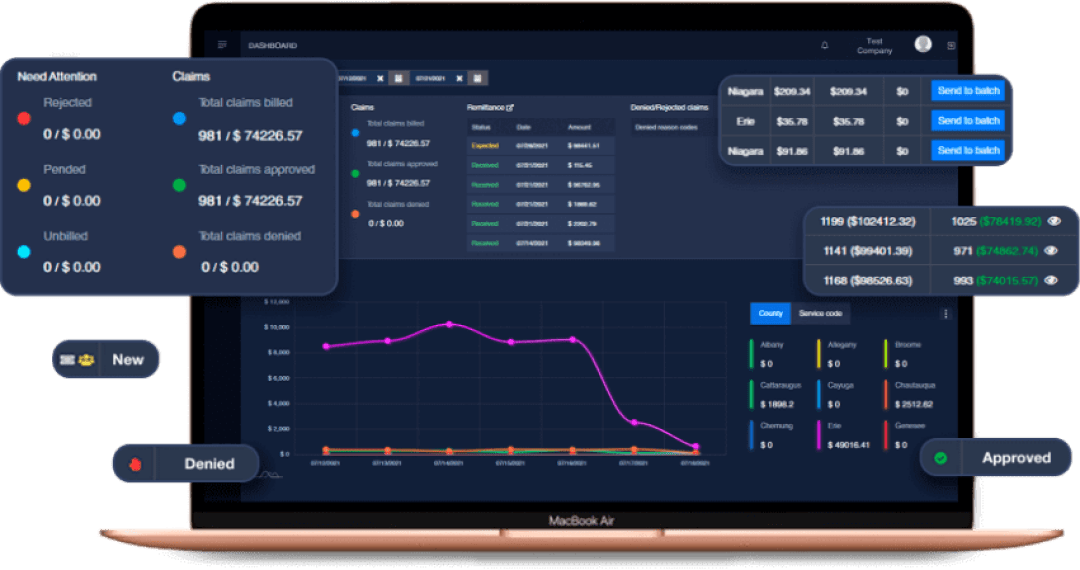
BOZEMAN — After 34 years of teaching at Montana State University while concurrently producing dozens of films and raising two children, Dennis Aig is ready for bed.
The 73-year-old left his mark on the film industry through his own work and by influencing generations of young filmmakers in the classroom and on film sets. In nearly every project Aig worked on, he included students, allowing them to gain valuable hands-on experience and strengthen their resumes.
“I always tell my production management class, I can teach you process but I can’t teach you what it’s really like,” Aig said. “I can tell you what to do, but I can’t tell you how you’re going to have to do it, because every film is different. Immersing the students in an actual movie that is being made with experienced filmmakers and at a very high level, that’s really the best way to learn because you see how they handle the situations.”
In recent years, students have returned the favor by hiring Aig to produce their films. He co-produced the award-winning documentary “Youth v. Gov” — now available on Netflix — with former student Christi Cooper, who directed, produced and wrote the film.
“One of the biggest compliments I’ve ever had was that I’ve had my former students ask me to help them produce their films,” Aig said.
For his documentary “Unbranded,” Phil Baribeau, an MSU graduate and founder of Implements Productions, tapped Aig to run production while Baribeau traveled with cast members as they drove a group of wild mustangs from Mexico to Canada, through the Rocky Mountains.
When filming for “Unbranded” was about to begin, Aig was asked to take over as director of MSU’s School of Film and Photography, which he did, from 2013 to 2016, while simultaneously teaching and producing.
“So, I didn’t sleep for like three years,” Aig said.
This exemplifies his motto of “embrace the chaos,” a line that resonated with Aig’s students and reflects the work of a film producer, where one minute everything can be going smoothly and the next, pandemonium erupts.
“You have to love that — the idea that if you make a mistake, the deep end is not too far away, but if you do it right, higher ground is there, too,” Aig said.
Cindy Stillwell, an MSU film professor who worked alongside Aig for 24 years, was impressed with his persistence, levelheadedness and almost photographic memory. She reflected fondly on listening to him share knowledge with students in his office next door to hers.
“I remember him being the voice of reason when passions ran high on the set from various stress or whatever,” Stillwell recalled. “Dennis talked me off a ledge more than once. He just embraces chaos and rolls with it.”
Aig accepted a job at MSU in 1989 to teach in the College of Arts and Architecture and produce films for Montana PBS. He was born in New York but moved to Montana from Ohio, where he attended graduate school and made marketing videos for a chemical information company. The 1970s “second golden era of film,” which included several Martin Scorsese movies, “The Godfather” series and “Star Wars,” inspired Aig to pursue a film career.
His first big hit, 1992’s “Shadow Casting: The Making of ‘A River Runs Through It,’” jumpstarted his career as a filmmaker. Aig has won five regional Emmys while also overseeing the film school’s MFA program and its rise to the nation’s No. 1 ranked program in science and natural history filmmaking .
While most known for his work on documentaries, Aig has also produced dramatic feature films, commercials and even music videos. Olivia Andrus, a former student of Aig’s, learned from him how to diversify.
“I’m a better producer because of him,” she said. “He’s been in the industry and has done everything. He thinks filmmaking is filmmaking, regardless of genre. He taught us to be open to all of the opportunities that come our way.”
Although Aig’s retirement from MSU leaves a hole in the film department, his legacy endures among the students and faculty he positively influenced during the last four decades, according to Alexis Pike, interim director of MSU’s School of Film and Photography. She noted Aig’s perseverance, work ethic and generous sharing of information as key factors that led to his success as a professor, producer and administrator.
“I think the one thing about Dennis is that his legacy continues in the students he has mentored and the opportunities that they have been able to carve out for themselves in the industry,” Pike said. “He is very supportive of those students and also serves as an example of working in the industry while working in academia.”
However, she questioned his sleeping habits.
“Dennis sends emails at the crack of dawn – 4 a.m. sometimes. I don’t know if he sleeps. I really don’t,” Pike said.
Baribeau added, “When you’re on a project with him, you can pretty much expect you’re going to get an email at 11 p.m. or midnight, and then your next email is going to be at 4 or 5 in the morning.”
Aig’s former students and coworkers agreed: The man deserves some rest.
But he’s not done yet. “I only have one job now,” Aig said with a smirk.
He’s still working on films. He recently produced a thriller that is looking for distribution, “Thine Ears Shall Bleed,” and is collaborating with another former student, Cynthia Matty-Huber, on a documentary about the Montana photographer Barbara Van Cleve. He plans to continue producing, “as long as I can see and stand up.”
With his career as a professor in the rearview mirror, Aig plans to spend more time with his wife, daughters and grandchild. And maybe get some rest.
“It’s one reason I decided to retire,” he said. “I have to get some sleep. You can only do this for so long.”






News Comments
Thank you
Open Auditions for Annie
Monday, Sep. 16, 2024
I’m at the Bozeman airport where your painting, “Blowing East” is displayed. It’s absolutely gorgeous! Bravo, Marci!!
The Artists’ Gallery in Bozeman’s Emerson Cultural Center May Exhibits
Sunday, Jun. 30, 2024
This is so typical of a sign in, which we should not have to do to check if we or some one in our party got a permit. I have been working or "creating an account" for 30 minutes and just get the same ...
Smith River permit drawing results available
Sunday, Mar. 10, 2024
I have struggled with this podcast and my own participation therein, the event itself obviously traumatic, but beyond that my inability to reach anyone and convey anything resembling truth. The person ...
Billings, MT Case Becomes True Crime Podcast | 'An Absurd Result'
Marktokarski
Saturday, Jan. 20, 2024